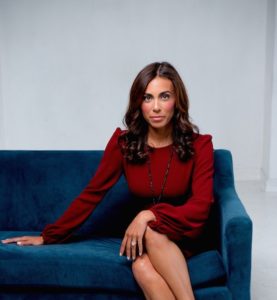Retail is Learning
Posted April 16, 2018
ESI Design’s Project Coordinator Jack Goddu reports back from the PSFK Future of Retail Conference.
Struggling retailers must offer unique experiences. What’s actually working in 2018?
Here’s what’s not: some projectors blasting an ‘immersive experience’ of canned footage, a touchscreen idling on your store’s website, a ten-foot LED wall looping your YouTube channel… While the ever-touted Store Of The Future may employ these tools, the medium alone is definitely not the message.
So what are the new reasons people come into the store, and buy, too? No one claims to have it perfect, but when consumer behavior & trend research gurus PSFK gathered experts at their Future of Retail conference, we had to hear the latest. The presenters didn’t disappoint– their insights were equal parts fresh and effective. Retail is definitely learning.
A few trends dominated the morning, such as providing unusual access to specialized expertise and offerings, making new spaces for like-minded people to have an experience around a shared interest, and using data in novel ways to tune offerings and bump transactions. Here are some of the presenters’ ideas and examples that we particularly loved:

Making a home for your communities
Belong.gg
These “third-place” arena-lounge spaces were made for both video gamers and non-gamers to try out new software, new hardware, and in the process, meet up and compete with other locals they might know from gaming online. Revenue comes from paid experience options as well as championship events and increased sales via the attached gaming store. With 20 arenas across multiple countries and more on the way, parent company GAME seems to know what they’re doing.

Questioning the R.O.I. of Experiences
“Consumers can have anything.
Experience offers mindshare.”
–Melissa Gonzalez, Founder
Lionesque Group. Pop-Up Strategists and Architects
This captures the current challenge-opportunity particularly well: Differentiate yourself with an experience so cool or useful, customers can’t stop thinking about it. This strategy posits that the retailer top of mind is the retailer top of budget– a wise choice from a group offering pop-up shop strategy.

Offering Access to Exclusive New Wellness
The Wellery at Saks Fifth Avenue
Saks had a temporary vacancy on its second floor and a desire to experiment with new offerings. Result: Visitors could try (+buy) all sorts of fancy, hard-to-access equipment, treatments, classes and services– in a luxurious, editorialized vision of the future of healthy living. The temporary setup generated buzz, attracted foot traffic and helped Saks determine what to roll out nationwide.

Treat the physical box as a flexible platform, embrace showrooming, and make offline more valuable than online.
B8TA
Similar to Saks’ Wellery, this technology store showcases bleeding-edge products from the internet that are yet to hit mainstream, and typically impossible to ‘try before you buy’. Employees are hired on their ability to provide Apple-standards of tutorial assistance, each store has a unique range of products, and new products arrive all the time.
Their business model is also unique: B8TA charges a flat subscription fee to each product’s maker based on elements such as how much shelf space they use, but 100% of the remaining sales revenue goes directly to each maker. The makers have full power to dictate the store experience, including which products are sold in which cities, how a product demo should be given to customers, what information goes on the digital info display, and more. They even get daily data and analytics about which products are getting attention and sales, in which places, at which times, etc. These insights help them tweak presentation and strategize roll out of products– from a test-run in one B8TA store to selling nationwide.
Transformation is a symptom, not a catalyst
By developing visitor experiences to be useful, usable and desirable, these stores transformed– but that change came about as a result of developing interesting programming. By giving customers an easier way to learn things they can’t elsewhere, or play in a way they can’t elsewhere, these retailers defined new value for brick & mortar. They feature technology in service of an experience, not just technology for technology’s sake. As traditional metrics of in-store performance continue to decline, retailers have increasing urgency to get real about what strategies are worth long-term investment– and as they do, we’ll have a clearer-than-ever picture of what success looks like at the Store of the Future.
And don’t forget to check out the latest retail experience work by ESI Design!


Join The Conversation